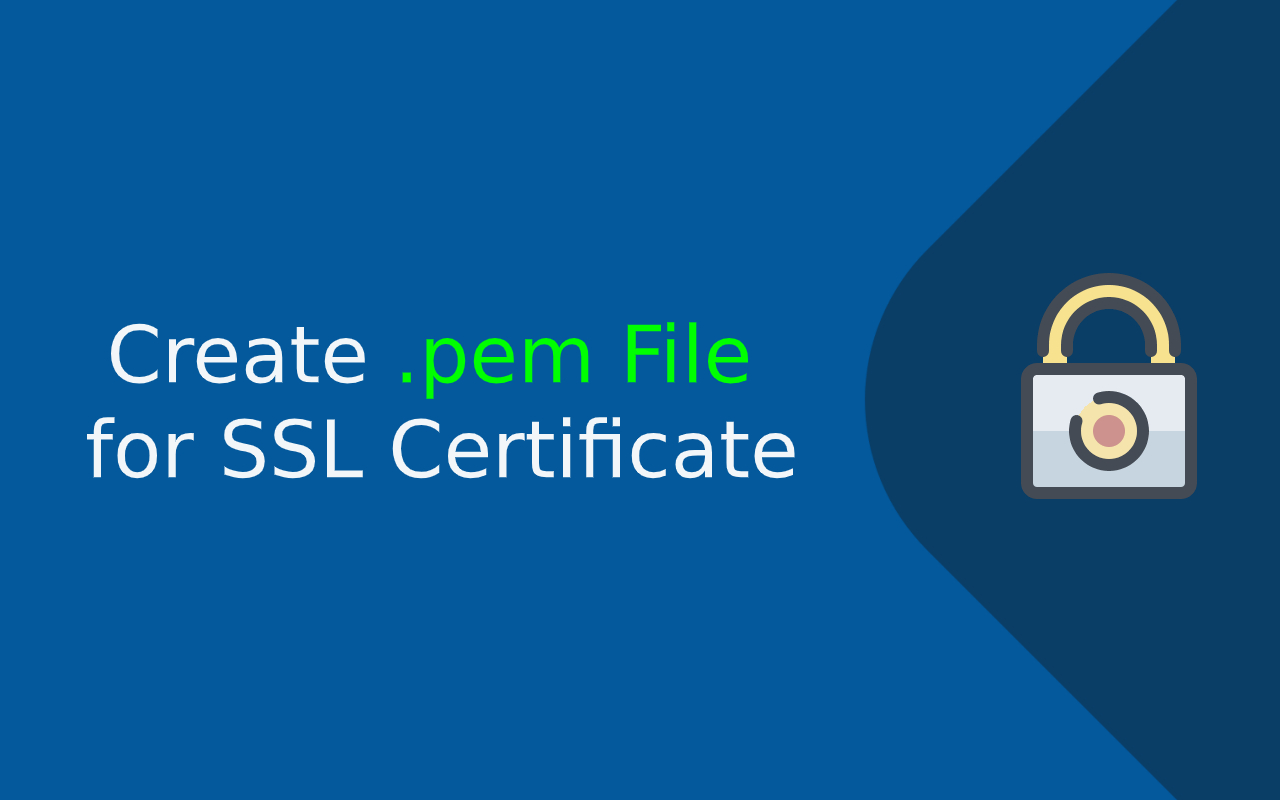PEM, or Privacy Enhanced Mail, is a DER certificate encoded in Base64. PEM certificates are often used for web servers because they can be quickly converted to human-readable data using a basic text editor. When a PEM-encoded file is opened in a text editor, its headers and footers are often highly distinguishable.

PEM is a file format that may include a certificate (also known as a public key), a private key, or both private and public keys joined together.
PEM is a container file format that is often used to hold cryptographic keys. It is used for a variety of purposes since it only describes the structure and encoding type of the file used to store a piece of data.
Privacy Enhanced Mail (PEM) files are typically used in certificate installations when numerous certificates that comprise a full chain are imported into a single file.
How to Create a .pem file with the Entire SSL Certificate Trust Chain
The PEM (formerly “Privacy Enhanced Mail”) file was created to safeguard e-mail. Now it is a standard for Internet security. The most used format for X.509 certificates, CSRs, and cryptographic keys is the PEM file. Here is complete guide to create PEM File-

– Login to your SSL Certificate Management Console and download your Intermediate (YourCA.crt), Root (TrustedRoot.crt), and Primary Certificates (your_domain_name.crt).
– Open a text editor and paste the entire body of each certificate into one text file in the following order:
The Primary Certificate – your_domain_name.crt
The Intermediate Certificate – YourCA.crt
The Root Certificate – TrustedRoot.crt
Make sure to include the beginning and end tags on each certificate. The result should look like this:
—–BEGIN CERTIFICATE—–
(Your Primary SSL certificate: your_domain_name.crt)
—–END CERTIFICATE—–
—–BEGIN CERTIFICATE—–
(Your Intermediate certificate: YourCA.crt)
—–END CERTIFICATE—–
—–BEGIN CERTIFICATE—–
(Your Root certificate: TrustedRoot.crt)
—–END CERTIFICATE—–
Save the combined file as your_domain_name.pem. The .pem file is now ready to use.
How to Create a .pem file with the Server and Intermediate Certificates

– Login into your SSL Certificate Management Console and download your Intermediate (YourCA.crt) and Primary Certificates (your_domain_name.crt).
– Again Open a text editor and paste the entire body of each certificate into one text file in the following order:
The Primary Certificate – your_domain_name.crt
The Intermediate Certificate – YourCA.crt
Make sure to include the beginning and end tags on each certificate. The result should look like this:
—–BEGIN CERTIFICATE—–
(Your Primary SSL certificate: your_domain_name.crt)
—–END CERTIFICATE—–
—–BEGIN CERTIFICATE—–
(Your Intermediate certificate: YourCA.crt)
—–END CERTIFICATE—–
Save the combined file as your_domain_name.pem. The .pem file is now ready to use.
How to Create a .pem file with the Private Key and Entire Trust Chain
Login into your SSL Certificate Management Console and download your Intermediate (YourCA.crt) and Primary Certificates (your_domain_name.crt).
Open a text editor and paste the entire body of each certificate into one text file in the following order:
The Private Key – your_domain_name.key
The Primary Certificate – your_domain_name.crt
The Intermediate Certificate – YourCA.crt
The Root Certificate – TrustedRoot.crt
Make sure to include the beginning and end tags on each certificate. The result should look like this:
—–BEGIN RSA PRIVATE KEY—–
(Your Private Key: your_domain_name.key)
—–END RSA PRIVATE KEY—–
—–BEGIN CERTIFICATE—–
(Your Primary SSL certificate: your_domain_name.crt)
—–END CERTIFICATE—–
—–BEGIN CERTIFICATE—–
(Your Intermediate certificate: YourCA.crt)
—–END CERTIFICATE—–
—–BEGIN CERTIFICATE—–
(Your Root certificate: TrustedRoot.crt)
—–END CERTIFICATE—–
Save the combined file as your_domain_name.pem. The .pem file is now ready to use.



